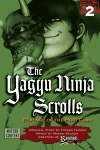
When a misplaced phone call connects him to the Realm of the Gods, good-hearted but unlucky college student Keiichi inadvertently finds himself the recipient of a wish…and a beautiful goddess named Belldandy is to be the one to fulfill it. When Keiichi’s wish – “to stay with you forever” – is granted, he now has to deal with a goddess (and her two outlandish sisters) living with him!
One of the most popular series outside of Japan, there have been 4 versions of the A! MG! anime (not counting full-length movies and spin-off series). I first saw the original A!MG! anime series back in 1997 as a fan-sub, and it was even old then; it’s been published in manga form since 1989 and shows no sigh of stopping. A! MG! holds a particular place in my heart, as this was the series that introduced me to “real” (i.e. subtitled) anime back in the mid-90s; not only was it the first “fansubbed” series I saw, but it was also one of the first subtitled animation I’d been exposed to as well. I know a lot of you younger folks got your exposure to Naruto, Bleech, etc, via cable, but fan-sub anime was a rare find back in those pre-BitTorrent days.
In terms of storyline, the length of A! MG! precludes a detailed plot overview. There was a certain slap-sticky element to the early stories, as Keiichi was forced to cover up the fact that his new girlfriend was actually a powerful and magical being, while trying to maintain a normal life; once Urd and Skuld entered the series, their mischief and ham-fisted attempts at living like mortals began to drove the plot, along with introduction of more “mystical” elements and action. Due to the fact that both Keiichi and Belldandy are excellent motorcycle riders and mechanics, there has been a large emphasis on racing action during the course of the series as well (which Fujishima excels in depicting).
So, does it hold up after all these years? Well, yes and no. Along with Ureisei Yatsura, this series really popularized the “magical girlfriend” genre that’s been used countless times…so in a sense, the blame for the glut of bland/borderline sexist “magical girlfriend” can be laid at A!MG!’s feet. I’m sure I’m not alone in my perception of series heroine Belldandy as being a little too “perfect”– more often than not, she seems to have little personality and little motivation beyond being nice to Keiichi. However, you’re always stuck dealing with the fact that there’s a certain amount of fan-boy wish fulfillment in any shonen manga series (hell, most manga or comics are basically wish-fulfillment anyway) – and A!MG! is very mild compared to some of the more modern series.
With excellent art* and amazingly detailed mechanical rendering of the many motorbikes and machines that appear in the series, A! MG! remains a charming, good-natured work, (even after 19 years) probably due to the fact that it has a uniquely easy-going feel that’s easy to like and welcoming to non-manga readers. Along with Akira, Neon Genesis Evangelion, and any Rumiko Takahashi series, this is one of those anime/manga works that every self-respecting otaku has been exposed to at least once.
*- (presently, at least - the early art is amazingly dated and “80’s” looking. Fans of 1980’s Masamune Shirow series ala New Dominion Tank Police and Appleseed will know what I mean…)

